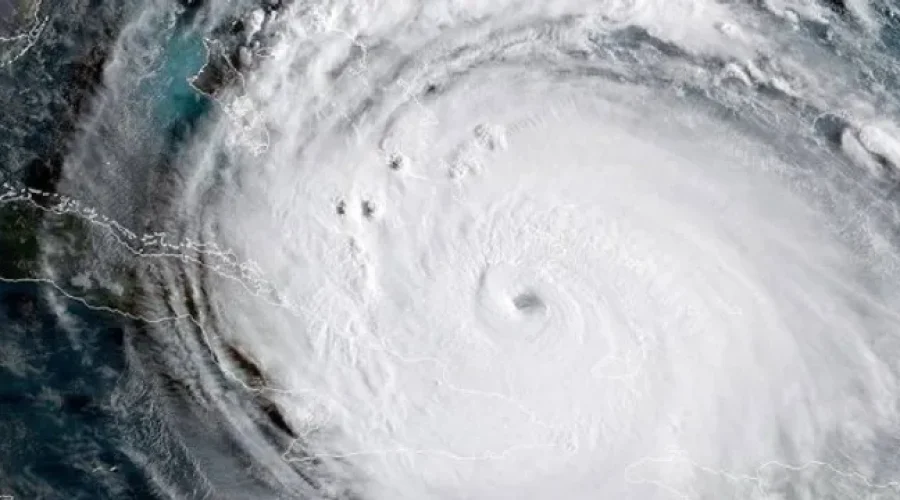Facing the storm: What’s your Hurricane plan?
We’ve all been told so many times and just as quickly as we hear it, we forget it! Life is busy but when a Florida hurricane hits, we know that preparation and a plan are vital. But preparing at home isn’t enough. Make sure you are taking the time to apply these steps to your business. Take a few minutes over the next week to go through these helpful steps to make sure you are prepared and ready to go the next time Jim Cantore from the Weather Channel arrives!
#1. Have a plan
Make a family communications plan. As roads may be impassable and cell phone service may be disrupted, identify alternate ways of staying in touch with loved ones.Choose an out of town friend or relative as a point of contact.Decide on a meeting place in case you cannot return home.Keep important documents and phone numbers with you at all times.Ensure children are included in preparedness conversations and make sure they have emergency contacts memorized or saved in a secure place.Do not forget to make a communication plan for your business, your co-workers, your employees or your employer!
#2. Make a kit
Consider the specific needs of your family, including the elderly and those with access and functional needs, to ensure you have supplies for the first 10 days following a disaster as they may have to shelter in place at home.Store one gallon of water, for drinking and sanitation, for each person per day.Include non-perishable foods for each person in the household paying particular attention to family members with special diets and allergies.Have hand sanitizer, antibiotic ointment, hygienic products, diapers and wipes available.Include a favorite toy, stuffed animal, books and activities for younger members of the family.Protect your important documents such as vital records, insurance policies, medical information, property and financial records.At work, be sure to complete a thorough inventory.
#3. Plan for pets
Make sure to have adequate food and water for your pet. Be sure your pet is wearing a collar with updated identification tags with the pet’s name, owner’s name, address and phone number.Never leave your animals caged or tied up with no option to escape.Research evacuation animal shelters in advance in the event you cannot take them with you. Every community has sites available.Create a buddy system in case you’re not home. Ask a trusted neighbor to check on your animals.A picture of you and your pet together. If you become separated, a picture of you and your pet together will help you document ownership and allow others to assist you. Add species, breed, age, sex, color and distinguishing characteristics.Pet litter and litter box if appropriate, newspapers, paper towels, plastic trash bags and household chlorine bleach.
#4. Secure your property
Prepare to store anything from your property that could be picked up by hurricane winds and turned into a harmful object.Trim trees to remove dead limbs and secure rain gutters and downspouts.Make sure porches, decks or sheds are sound and firmly attached.Fasten down roofs with hurricane straps or clips and install strong bolts at the top and bottom of exterior doors. Buy or make storm shutters for windows.Clean out gutters and dispose of any items that could cause additional damage in high winds. Make sure any outside displays are put inside or tied down securely.
#5. Harden your property
Creating a home inventory will help ensure that you have purchased enough insurance to replace your personal possessions. It can also speed the claims process, substantiate losses for income tax purposes and is helpful should you need to apply for disaster aid. In the event you need to evacuate, be sure your home inventory is among the important documents you take with you.Install storm shutters to protect your windows from breakage. Alternately, fit plywood panels to your windows, which can be nailed to window frames when a storm approaches.Make sure exterior doors are hurricane proof and have at least three hinges and a dead bolt lock that is at least one-inch long.Sliding glass doors should be made of tempered glass and, during a storm, covered with shutters or plywood. These types of doors are more vulnerable to wind damage than most other doors.
#6. Review your insurance
Keep in mind that your homeowners insurance covers the cost of temporary repairs for hurricane damage, as well as reasonable additional living expenses (ALE) over and above your normal living expenses if you have to relocate (such as the extra expense of getting to work or to school if your temporary home is in a different community).However, your homeowners policy doesn’t cover flood damage, so you may want to consider looking into flood insurance. If you live by the coast, you may also need a separate policy for protection against wind and wind-blown water damage. Now is a good time to contact your insurance if you have questions about what your current policy will cover or need to augment your current coverage. This same guidance applies to your business property. Post storm, stay tuned to SBA’s website and monitor their announcements. Historically, the SBA has offered assistance to those businesses that are affected by natural disasters.



